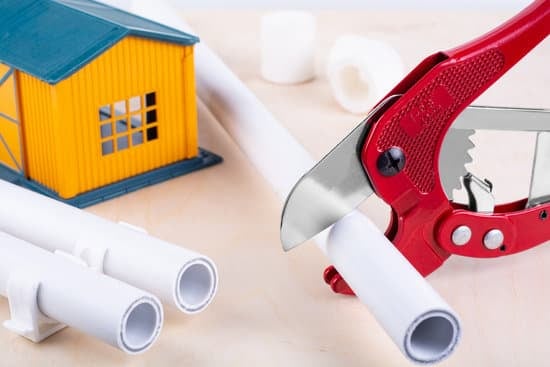Are you wondering how to use HELOC for home improvement? A Home Equity Line of Credit (HELOC) can be a valuable financial tool for funding various home improvement projects.
This article will provide a comprehensive guide on understanding, applying for, and managing a HELOC for your home improvement needs. By the end of this article, you’ll have a better understanding of the benefits and potential risks associated with using a HELOC, as well as the necessary steps to take advantage of this financing option.
A HELOC is a type of loan that allows homeowners to borrow against the equity in their homes. Unlike traditional home improvement loans, a HELOC provides flexible access to funds, making it an attractive option for financing renovation projects. With this in mind, it’s important to understand the intricacies of how a HELOC works and how it can be used effectively for home improvements.
One of the key advantages of using a HELOC for home improvement is the potential tax deductions on interest payments, as well as lower interest rates compared to other types of loans. Additionally, a HELOC allows homeowners to tap into their home’s equity without having to refinance their mortgage.
Throughout this article, we will delve into these benefits and provide helpful insights on maximizing the use of a HELOC for your specific home improvement projects. Let’s explore how you can leverage your home equity to enhance your living space and increase its value through smart financing with a HELOC.
Understanding HELOC
A Home Equity Line of Credit (HELOC) is a type of loan that allows homeowners to borrow against the equity in their homes. This means that if you have paid off a portion of your mortgage or if your home has appreciated in value, you may be eligible to access funds through a HELOC. One of the key benefits of using a HELOC for home improvement is the flexibility it offers.
Unlike other types of loans that provide a lump sum payment, a HELOC works more like a credit card where you can borrow and repay as needed, up to a certain limit. This makes it an ideal option for funding ongoing or unpredictable expenses related to home improvement projects.
When considering how to use heloc for home improvement, it’s important to understand how this type of loan works. A HELOC typically has two phases: the draw period and the repayment period.
During the draw period, which can last around 10 years, you can access funds as needed and only pay interest on the amount borrowed. Once the draw period ends, the repayment period begins, during which time you can no longer borrow funds and must start repaying both principal and interest.
In comparison to traditional home improvement loans, such as personal loans or cash-out refinancing, using a HELOC for home improvement may offer lower interest rates because it is secured by your home’s equity. Additionally, borrowers have more control over when and how they access their funds with a HELOC compared to other loan options.
Assessing Your Home’s Equity
Before considering a Home Equity Line of Credit (HELOC) for your home improvement project, it is crucial to assess the amount of equity in your home. Equity is the difference between the current market value of your home and the amount you still owe on the mortgage. The more equity you have, the more you may be able to borrow through a HELOC.
To determine your home’s equity, start by getting a professional appraisal to assess its current market value. Once you have this figure, subtract the outstanding balance on your mortgage from the appraised value. This will give you an estimate of your home’s equity. Keep in mind that most lenders require a minimum amount of equity in order to qualify for a HELOC, typically around 15-20%.
After assessing your home’s equity, it’s important to calculate the maximum amount you can borrow through a HELOC. Lenders typically allow you to borrow up to 85% of your home’s value minus what you owe on the mortgage.
However, it’s important to consider other factors such as credit score, income and employment history which can affect how much you are able to borrow. By understanding your home’s equity and borrowing limits, you can make informed decisions about using a HELOC for your home improvement plans.
Overall, understanding how much equity is available in your home is crucial when considering how to use heloc for home improvement projects. Taking time to accurately assess these figures will help ensure that this financing option is suitable for your specific needs and financial situation.
Choosing the Right Projects
When considering how to use a HELOC for home improvement, it’s important to carefully choose the right projects that will increase the value of your home. Using a HELOC can be an effective way to finance renovations and upgrades that have the potential to boost your home’s equity. Before tapping into your home equity, it’s essential to prioritize projects that will provide a return on investment and improve the overall value of your property.
Recommendations for Ideal Projects
When using a HELOC for home improvement, it’s advisable to focus on projects that will enhance the functionality and aesthetics of your home. This could include kitchen remodels, bathroom renovations, adding a deck or patio, updating flooring, or investing in energy-efficient upgrades such as new windows or solar panels. These types of projects are generally known to have a high return on investment and can significantly increase the resale value of your home.
Potential Return on Investment
Before making decisions on which projects to finance with a HELOC, it’s crucial to research and understand the potential return on investment for each renovation. Some upgrades may yield higher returns than others, so it’s important to consider factors such as market trends, local real estate conditions, and the preferences of potential buyers in your area.
By focusing on projects with a high potential for increasing your home’s value, you can make strategic use of your HELOC funds.
Consulting With Professionals
If you’re unsure about which home improvement projects are best suited for using a HELOC, consulting with real estate agents or professional contractors can provide valuable insights. These experts can offer advice on which upgrades are currently in demand and which ones are likely to provide the best return on investment in your specific market. Seeking professional guidance before utilizing your HELOC funds can ensure that you make informed decisions about where to allocate these financial resources.
By choosing the right projects for utilizing a HELOC, homeowners can maximize their investment in their properties while enjoying the benefits of upgraded living spaces. It’s essential to carefully consider how each project aligns with long-term goals for the property and seek expert advice when necessary before proceeding with any major renovations funded through a HELOC.
Applying for a HELOC
- Research Lenders: Start by researching different lenders that offer HELOCs. Compare their interest rates, terms, and fees to find the best option for your needs.
- Gather Documents: Before applying for a HELOC, gather necessary documents such as proof of income, tax returns, mortgage statements, and other financial documents. Each lender may have specific requirements, so it’s crucial to be prepared.
- Complete Application: Once you’ve chosen a lender, complete the application for the HELOC. You may need to provide information about your property, employment, income, and debts.
- Home Appraisal: The lender will likely require an appraisal of your home to determine its current value. This is an essential step in the HELOC application process.
- Wait for Approval: After submitting your application and required documents, wait for the lender’s decision. This may take some time as they review your financial information and property value.
- Closing Process: If approved for the HELOC, you will go through a closing process similar to when you obtained your original mortgage. The lender will provide details on the credit limit, repayment terms, and any associated fees.
By following these steps carefully and providing all required information accurately and promptly, you can increase your chances of securing a HELOC for your home improvement projects.
It’s important to note that each lender may have slightly different requirements and processes when it comes to applying for a HELOC. Therefore, it’s essential to communicate with the selected lender throughout the application process and ask any questions or seek clarification on anything that may be unclear.
Managing HELOC Funds
After successfully securing a Home Equity Line of Credit (HELOC) for your home improvement project, effectively managing the funds is essential to ensure that the project stays within budget and on schedule. Here are some strategies for managing your HELOC funds:
- Create a detailed budget: Before starting any home improvement project, it’s crucial to create a comprehensive budget that outlines all the expenses involved. This includes materials, labor costs, permits, and any unexpected expenses that may arise during the project.
- Use the funds wisely: With a HELOC, you have access to a certain amount of funds based on your home’s equity. It’s important to use these funds prudently and avoid any unnecessary expenditures. Make sure to allocate the funds according to your planned budget and prioritize essential aspects of the project.
- Track expenses: Keep a close eye on all your expenses throughout the home improvement process. This can be done through spreadsheets or using budgeting apps to track where the money is being spent. Regularly monitoring your expenses will help prevent overspending and keep the project on track.
Additionally, consider setting up a separate bank account specifically for your HELOC funds, making it easier to keep track of expenses and monitor how much of the line of credit you’ve utilized.
Remember that effectively managing the funds received through a HELOC is crucial for not only completing your home improvement project successfully but also minimizing financial strain in the long run.
By following these strategies for managing your HELOC funds, you can ensure that your home improvement project stays within budget and achieves the desired results without putting undue strain on your finances.
Repayment and Interest
When using a HELOC for home improvement, it’s crucial to understand the repayment terms and interest rates associated with this type of loan. A HELOC typically has a draw period, during which you can access funds as needed, followed by a repayment period. During the draw period, you only need to make interest payments on the amount you have borrowed. Once the repayment period begins, you will need to start making payments on both the principal and interest.
Interest rates for a HELOC are often variable, meaning they can fluctuate over time. It’s important to carefully review and compare different HELOC offers from various lenders to secure the most favorable terms. Some lenders may offer introductory or promotional interest rates, so be sure to inquire about any potential rate adjustments after the introductory period ends.
To minimize interest costs and pay off the HELOC balance efficiently, consider making larger or extra payments whenever possible. This can help reduce the overall interest that accrues over time and shorten the duration of your repayment period. It’s also wise to regularly monitor your outstanding balance and keep track of your spending to avoid unnecessary interest charges.
| Repayment Period | Interest Rates |
|---|---|
| Draw Period: Access funds and make interest-only payments | Variable rates – compare offers from different lenders |
| Repayment Period: Make payments on both principal and interest | Consider making additional payments to reduce overall interest costs |
Potential Risks and Precautions
Understanding the Risks
Using a HELOC for home improvement can come with certain risks that homeowners need to be aware of. One significant risk is the potential decrease in home equity if the value of the home depreciates or if the borrower uses up too much of their available credit.
Additionally, because a HELOC is a form of revolving credit, there is a risk of overspending and accumulating high levels of debt that can be difficult to pay off. It’s important for homeowners to understand these risks before utilizing a HELOC for their home improvement projects.
Protecting Your Home Equity
To mitigate the risk of diminishing home equity when using a HELOC for home improvement, it’s crucial for homeowners to make wise financial decisions. This includes carefully considering the total amount borrowed and ensuring that any improvements made will increase the overall value of the property. Additionally, avoiding using the funds from a HELOC for non-essential expenses can help protect home equity and prevent unnecessary debt accumulation.
Adhering to Repayment Terms
One of the key precautions when using a HELOC for home improvement is adhering to the repayment terms set by the lender. Failing to make timely payments or only making minimum payments can result in substantial interest charges and prolonged debt repayment.
Homeowners should prioritize repaying their HELOC balance as quickly as possible to avoid falling into a cycle of debt. By keeping a close eye on budgeting and managing expenses, borrowers can ensure they are able to repay their HELOC without substantial financial strain.
Conclusion
In conclusion, using a HELOC for home improvement projects can be a wise and cost-effective financing option for homeowners. By understanding the ins and outs of a HELOC, assessing your home’s equity, choosing the right projects, applying for a HELOC, effectively managing the funds, and being mindful of repayment and interest, homeowners can tap into their home’s equity to upgrade their living space.
The flexibility and potential tax benefits of a HELOC make it an attractive choice for those looking to enhance their property.
When considering how to use HELOC for home improvement, it is essential to weigh the potential risks and precautions associated with this type of financing. While there are substantial advantages to utilizing a HELOC, such as lower interest rates compared to other types of loans and the ability to borrow as needed during the draw period, homeowners must be cautious about overleveraging their home equity and ensure that they can comfortably afford the monthly payments.
Overall, a HELOC offers homeowners an opportunity to invest in their property while potentially increasing its value. Whether it’s renovating a kitchen, adding an extra bathroom or creating outdoor living space, a HELOC provides homeowners with financial flexibility and control over their home improvement projects.
As with any significant financial decision, it’s crucial for individuals to thoroughly understand how to use heloc for home improvement before proceeding with this type of loan. By following the outlined guidance and taking precautionary measures, homeowners can confidently leverage their home’s equity for renovation endeavors.
Frequently Asked Questions
Is It a Good Idea to Use a HELOC for Home Improvements?
Using a HELOC for home improvements can be a good idea if you have a solid plan for using the funds and are confident that the improvements will increase the value of your home. It’s important to consider the risks involved and make sure you can afford the payments.
Can a HELOC Be Used for Repairs?
Yes, a HELOC can be used for repairs. Whether it’s fixing a leaky roof or updating your plumbing, utilizing a HELOC for necessary repairs can be a practical way to cover these costs. However, it’s crucial to ensure that you’ll be able to repay the borrowed funds.
What Should You Not Use a HELOC For?
It’s generally not advisable to use a HELOC for everyday expenses or non-essential purchases. Using it for things like vacations, shopping sprees, or other discretionary spending can lead to financial strain and put your home at risk if you’re unable to make your payments.
It’s best to reserve HELOC funds for investments in your home or other significant expenses with substantial long-term value.

I’m thrilled to have you here as a part of the Remodeling Top community. This is where my journey as an architect and remodeling enthusiast intersects with your passion for transforming houses into dream homes.





